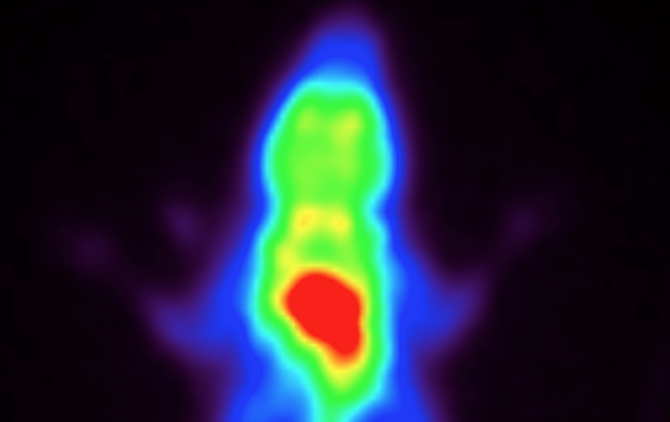Penn Medicine: Cell Nucleus Protein in Brown Fat Cells Governs Daily Control of Body Temperature
For nearly 300 years, investigators have known that body temperature follows a circadian, or 24-hour, rhythm, with a peak during the day and a low at night. The benefit of this control during evolution may have been to allow conservation of energy while sleeping because keeping body temperature above the surrounding temperature requires heat production from metabolic processes inside the body. But, it is also critical to be able to adapt to changes in ambient temperature, regardless of the time of day.
However, the mechanism responsible for coordinating daily body temperature rhythm and adaptability to environmental challenges is unknown. Now, the laboratory of Mitchell A. Lazar, MD, PhD, director of the Institute for Diabetes, Obesity, and Metabolism at the Perelman School of Medicine, University of Pennsylvania explains in Nature how body temperature rhythms are synchronized while maintaining the ability to adapt to changes in environmental temperature no matter the time of day or night.
"Food is plentiful in our present day society, and for most people there is unlikely to be an advantage of saving calories at night", says Lazar. "If this same mechanism exists in people, and we can target it safely, we could have a new way to combat obesity and its associated conditions such as diabetes and heart disease.”
Lazar's team, including lead author Zachary Gerhart-Hines, Ph.D., found that the ability of mice to withstand a cold-temperature challenge was greater at 5:00 AM, when the mice are awake, compared to 5:00 PM when they are normally sleeping.
This previously unrecognized circadian susceptibility to cold was found to be controlled by a protein called Rev-erb alpha, which is a molecular component of the body's biological clock mechanism. Indeed, mice engineered to lack the Rev-erb alpha protein had similar cold tolerance throughout the 24-hour day and also lost the physiological circadian rhythm of body temperature. The all-Penn team of authors represents a broad set of expertise, including those who study brown fat physiology, radiology for PET scans of experimental mice, and basic physiologists who ruled out shivering as an explaining mechanism for the findings.
Click here to view the full release.







